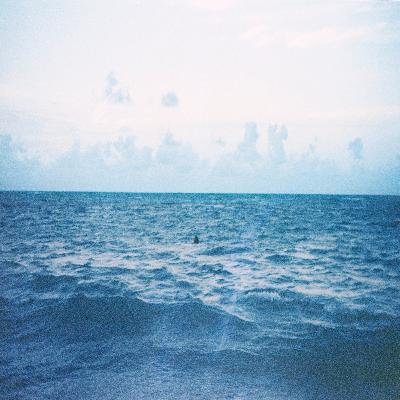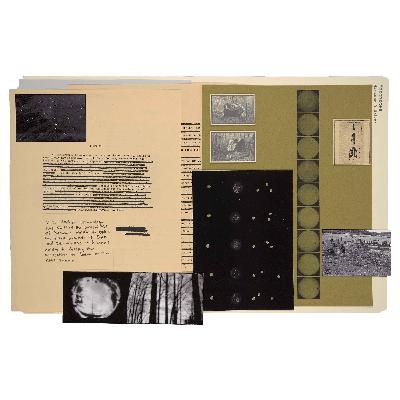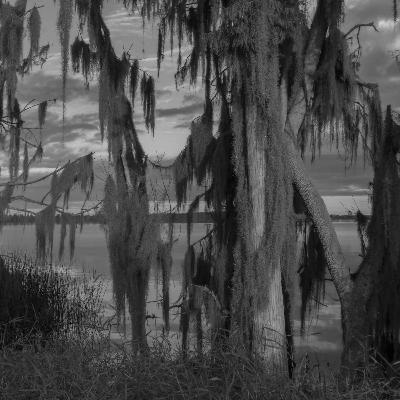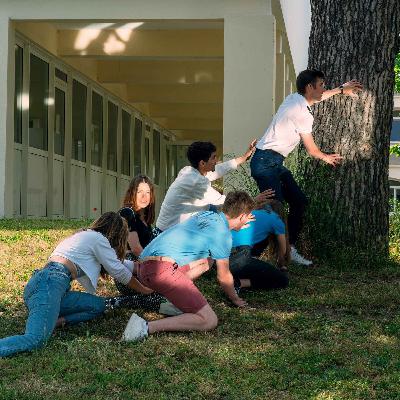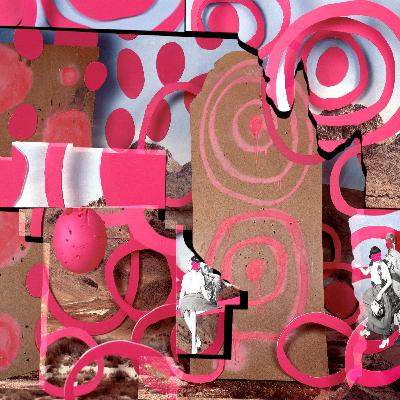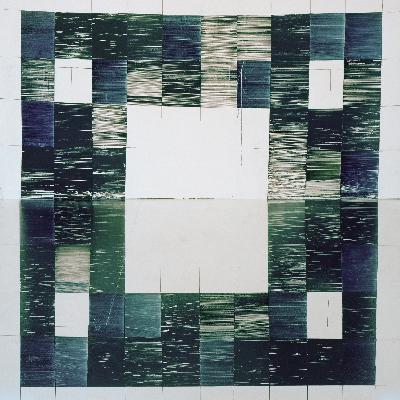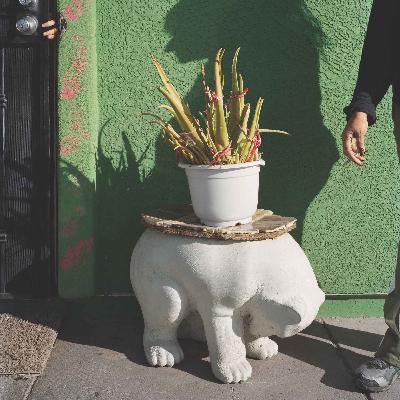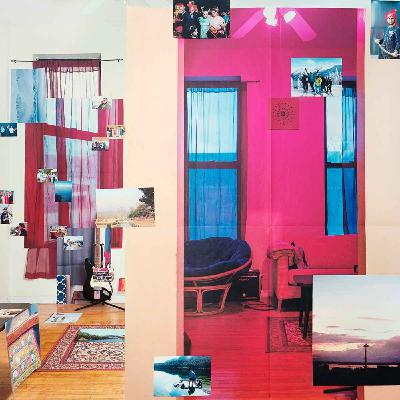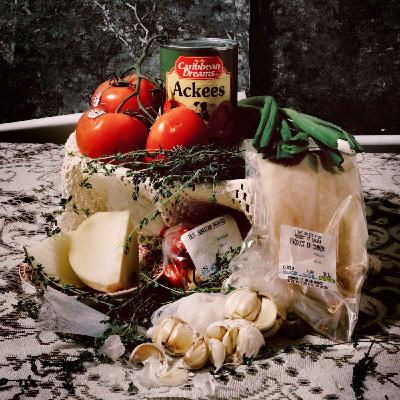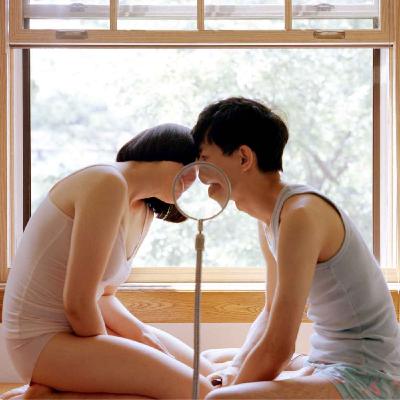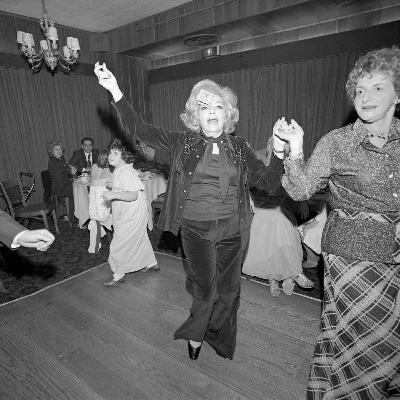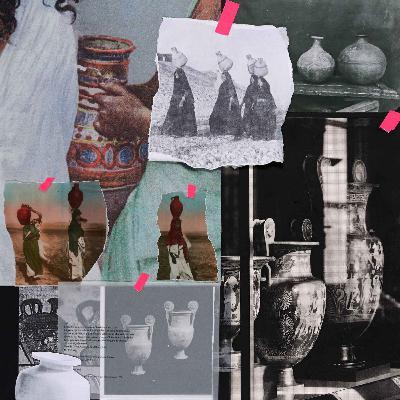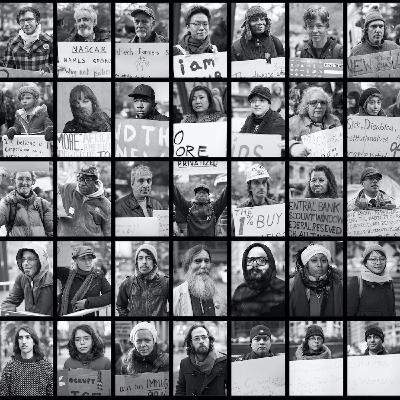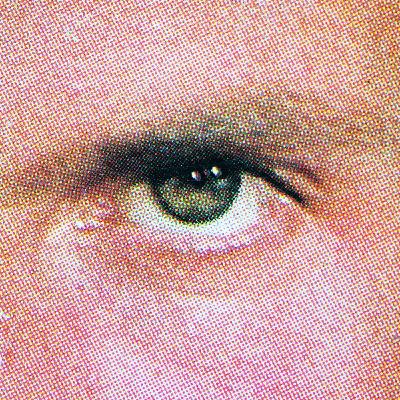Discover Light Work Podcast
Light Work Podcast

Light Work Podcast
Author: Light Work
Subscribed: 2Played: 55Subscribe
Share
© Light Work
Description
The podcast from Light Work, a non-profit photography organization in Syracuse, New York — Support this podcast by treating yourself or a loved one to something at www.lightwork.org/shop
Hosted on Acast. See acast.com/privacy for more information.
43 Episodes
Reverse
Sasha Phyars-Burgess: Everything NiceSeptember 8–December 5, 2025Kathleen O. Ellis GalleryReception: Thurs, Sep 18, 5-7pmSasha Phyars-Burgess’s photographic project Everything Nice traces her family history through Portugal, the Dominican Republic, Florida, and Louisiana, following the paths of sugarcane farmed on colonial plantations and the transatlantic slave trade in relation to her ancestors. The photographs are taken in various locations: Madeira, Portugal, the Dominican Republic, Florida, and Louisiana. The pictures provide clues and details that are layered into a larger story.Looking back at history and locating the present, Phyars-Burgess is thinking through the idea that we are all living in a history, whether it is acknowledged or not. Once acknowledged, and if we allow ourselves to live with the past, with choices made by and for others, we can access a wider view of the present day.Through research and picture-making, Phyars-Burgess’s ongoing project affords us a better understanding of globalization and its languages, and shows us that places which at first glance look “ethnic” can be regarded differently.The work’s title, Everything Nice, is the name of a song by Popcaan. In it, he speaks about the hardships and struggles that people are going through while also joining together in community, getting to the heart of the matter, and being present. This exhibition invites us to slowly look, ask questions, and decipher information to uncover possible and actual answers.—Sasha Phyars-Burgess.b. 1988.Scorpio.Black.Alive.sashaphyars-burgess.com—Special thanks to Daylight Blue Media daylightblue.comLight Work lightwork.org Hosted on Acast. See acast.com/privacy for more information.
Aaron Turner: The Archive as LiberationMay 12–August 29, 2025Kathleen O. Ellis GalleryReception: Friday, July 25th, 5-7pmThe Archive as Liberation is a publication and exhibition organized by Aaron Turner (Light Work artist–in-residence, 2018, and Light Work exhibiting artist, 2021). Turner has gathered a unique group of artists and writers to engage in dialogue around archival photographic methods. Contributors include Andre Bradley, calista lyon, Raymond Thompson Jr., Harrison D. Walker, and Savannah Wood, alongside writing by Chisato Hughes, Alec Kaus, Andrew Martinez, Aaron Turner, Amelia Wallin, and Wendel A. White, with a foreword by the book’s editor, Donasia Tillery. The publication was designed by Elana Schlenker. Tillery writes, “What if memory is not solely an act of recollection, but of discovery and creation? The Archive as Liberation considers this question from the perspectives of subjects who lack access to traditional modes of documentation—Black and Indigenous cultures creatively preserved despite systemic erasure, landscapes that bore witness to colonial conquests, and the lineages that continue to survive in their wake. These works prompt us to consider not just what we remember but how we remember. In doing so, they work to inspire a more authentic vision of the past and a liberated vision of the future.” To mark the launch of this publication, Light Work has mounted an exhibition highlighting many of the contributing artists. This exhibition includes work by Andre Bradley, Chisato Hughes, Alec Kaus, calista lyon, Raymond Thompson Jr., Harrison D. Walker, Wendel A. White, and Savannah Wood. The exhibition also includes a unique reading room curated by Turner with artists’ books from his personal collection and pieces from Light Work’s collection. The reading room will be in Light Work’s Lab for the duration of the exhibition.Image Credit: Harrison D. Walker, Between Two Worlds, Footnotes, 2025—Aaron Turner is a photographer, educator, and independent curator, born and raised in the Arkansas Delta. Turner holds an MA from Ohio University and an MFA from Mason Gross School of the Arts. In his studio practice, he uses the 4×5 view camera to create still-life studies on identity, history, abstraction, and archives. He has organized the following selected exhibitions and symposiums: And Let It Remain So: Women of the African Diaspora (Phoenix Art Museum, 2022), Time & Empathy: Arkansas Photographer Geleve Grice (University of Arkansas, 2021–22), and Resounding Sovereign Expressions: Resurgent Indigenuity in Ozark Arts Practice & Scholarship (University of Arkansas, 2025). He most recently joined the University of Michigan’s Penny W. Stamps School of Art & Design as an assistant professor.—Special thanks to Daylight Blue Media daylightblue.comLight Work lightwork.org Hosted on Acast. See acast.com/privacy for more information.
Nabil Harb’s project Mater si, magistra no (a macaronic phrase that translates as “Mother yes, teacher no”) presents photographs that describe and depict moments and scenes within his hometown of Lakeland in Polk County, Florida. This Central Florida location is both the backdrop and main character of Harb’s visual narrative: a story that emits surreal qualities which twist ideas of the region through photography’s formal language into a conceptual idea—an idea of how to describe the atmosphere of a place without words. Harb writes, “The landscape is the perfect reflection of our society, our ultimate index—it holds our histories, our secrets, our failures, and our hopes for the future.” Harb uses his camera to look rather than gaze at the wily scenes and moving bodies; his images disturb the before and after of a photograph by showing a moment extended or an instant flashed with a strobe. The project title informs Harb’s reasons and choices around his subject matter with his opinions and beliefs about this landscape, the people who inhabit it and move through it, and his subjecthood. The history of land usage in Central Florida greatly influences where he goes to photograph and how he looks at his surroundings. The narratives in his work are conflicting and intermingle with one another. The overriding story is one of man versus nature, of beauty and destruction coexisting in an atmosphere that is surreal, seductive, and breathtaking. Where the conflicting notions of destruction and rebirth intersect is also the point at which Nabil Harb’s formalism and conceptual photographic practice meet, showing us the potential for beauty in destruction and foreboding rebirth. Image credit: Nabil Harb, Lake Hancock, 2024—Nabil Harb is a Palestinian American photographer born and raised in Polk County, Florida, where he still lives. Harb received his BA in anthropology from the University of South Florida and his MFA in photography from Yale University. His work has been featured in Aperture, The Atlantic, ArtReview, The Guardian, and A24. nabiljharb.com/—Special thanks to Daylight Blue Media daylightblue.comLight Work lightwork.org Hosted on Acast. See acast.com/privacy for more information.
In this exhibition, Nicholas Muellner offers up photographs depicting people pantomiming in a verdant landscape made complex with surreal lighting; these images are paired with an issue of Contact Sheet that serves as a guidebook to the exhibition. The text in Contact Sheet is wryly poetic and succinct, and loosely leads us from picture to picture. Asea takes us somewhere without making its destination specific, setting a tone and mood that guides our desire for meaning but refuses to precisely locate it.The exhibition conveys a type of suspended drama via an installation that divides the gallery into two rooms, creating an atmosphere in which viewers float, both in space and time. The majority of the portraits are of people connected to the maritime economy and all of the photographs were made in a landscape or setting that the subjects live in: Marseille, Odesa, Milan, Long Beach. The subjects gesture toward the camera, holding the invisible tools of their respective trades, and suggesting an estrangement from their concrete identities.With Asea, Muellner projects a state of limbo and a search for personal meaning within photography’s inevitable narrative limits. We are asked to ponder alone, in a subjective state that is not fixed but which hovers within the parameters established by the photographs and text. Ultimately, we engage with Asea because it is at once thoughtful, beautiful, and curious.—Nicholas Muellner is an artist and writer whose books include Lacuna Park: Essays and Other Adventures in Photography, The Amnesia Pavilions, and In Most Tides an Island, which was shortlisted for the Paris Photo–Aperture PhotoBook Award and named a Best Book of the Year in Artforum. In addition to solo exhibitions in the United States and Europe, his writing has been published by MACK/SPBH, Aperture, Radius, Triple Canopy, Foam, and Routledge, among others. Muellner has performed slide lectures internationally, including at MoMA PS1, Carnegie Museum, The Photographers’ Gallery, and the Museum of Contemporary Photography. His work has been supported by a 2018 Guggenheim Fellowship in Photography, a John Gutmann Fellowship, and residencies at the MacDowell and Yaddo colonies. Muellner received a BA in comparative literature from Yale University and an MFA from Temple University. He is the founding co-director of the Image Text MFA and ITI Press at Cornell University.nicholasmuellner.com—Special thanks to Daylight Blue Media daylightblue.comLight Work lightwork.org Hosted on Acast. See acast.com/privacy for more information.
According to the Laws of Chance: Group ExhibitionMay 31–August 16, 2024Kathleen O. Ellis GalleryReception: Friday, July 26, 5-7pmAccording to the Laws of Chance is a subtitle included in many works by the Dadaist painter Jean Arp that describes his systematic yet chance-driven method of creating his simple and playful paintings. Arp would let torn pieces of paper fall to the floor to determine his painting or collage compositions. Although the outcomes are different, Arp’s ethos can be found in the work of the photographers selected for this group exhibition.The artists in this exhibition—Cheryl Miller, Claire A. Warden, Jaclyn Wright, Josh Thorson, Kyle Tata, Louis Chavez, and Will Stith, and Light Work’s collection artists, Cecil McDonald, Jr., James Welling, Peter Finnemore, and Rita Hammond—are using and defining chance as a core element of their largely divergent practices.Chance is a core tenet of photography. The image-makers in this exhibition embrace the unpredictable and find ways to amplify chance for conceptual and creative purposes. These artists interpret chance via darkroom and analog experimentation, conceptually driven exploration, daily image-making, and studio-based arranging. The results of these methods are surprising expressions of each artist’s voice. Together they showcase the wide-ranging use of chance and highlight it as a vital tool in contemporary photographic practice.Special thanks to Daylight Blue Mediadaylightblue.comLight Worklightwork.orgCover Image by Jaclyn Wright Hosted on Acast. See acast.com/privacy for more information.
In 1987, Sophia Chai immigrated to New York City from South Korea as a teenager without knowing English. Looking back, she has described that experience as feeling untethered to any internal compass that she could use to navigate her place in a new country with a new language. She visually explains these experiences to us by reinterpreting the Korean language’s characters in photographs that enable us to see the contradictions of visual and verbal communication.Chai uses optics (focal length, perspective, perception, and magnification) to pin down the marks, rubbings, and paintings on her studio walls. The overall effect is a collage of ideas, with an efficient yet complicated economy of picture making with intentional gaps. These gaps can describe the moment right before the sound of a word comes out of the interior space of the mouth.sophiachai.com—Special thanks to Daylight Blue Media daylightblue.comLight Work lightwork.org Hosted on Acast. See acast.com/privacy for more information.
The Sun Echoed Like A Song is an exhibition of photographs made in Eduardo L Rivera’s childhood hometown near the Arizona/Mexico border. Taking inspiration from light and heat, he has been exploring the personal histories of family, community, and environment throughout the last decade.eduardolrivera.com—Special thanks to Daylight Blue Media daylightblue.comLight Work lightwork.org Hosted on Acast. See acast.com/privacy for more information.
In Shunyo Raja (Kings of a Bereft Land), Arko Datto’s epic three-part series chronicles the lives of those living in the world’s largest delta, variously known as the Ganga-Brahmaputra-Meghna Delta. Climate change has rapidly put this immense region and its inhabitants in danger. Even as the artist summarizes the complexity and scale of the challenges confronting both, he knows his time with this landscape is fleeting.arkodatto.com—Special thanks to Daylight Blue Mediadaylightblue.comLight Worklightwork.org Hosted on Acast. See acast.com/privacy for more information.
Jenny Calivas' images breathe in photography’s liminal space between intuition and what words can only sometimes convey. Here is a photographer whose practice is consistently curious and rigorous. Her images can unexpectedly taunt us, at once generous and withholding, still and active. In so doing, Calivas wrestles and succeeds with a multitude of ideas—from the spiritual to the feminist to the ecological—and elicits moods that range from the humorous to the existential.jennifercalivas.com—Intro/Outro Music: Vela Vela by Blue Dot SessionsSpecial thanks to Daylight Blue Mediadaylightblue.comLight Worklightwork.org Hosted on Acast. See acast.com/privacy for more information.
Guanyu Xu’s Suspended Status depicts an artist caught in a web of red tape. The work on view for this exhibition comprises images from his ongoing series, Resident Aliens, as well as a large grid of images that he calls Suspension. Both bodies of work use visa status in the United States as a means of framing images that depict people who are suspended between countries and cultures. Their futures hang on faceless state agencies in a churning political current. Xu's major influences are the production of ideology in American visual culture and a conservative familial upbringing in China. Xu’s practice examines the production of power in photography as well as the fate of personal freedom and its relationship to political regimes. He negotiates these questions from his perspective as a Chinese gay man. He makes use of photography, new media, and installation, and his work across media intentionally reflects aspects of his displaced and fractured identity.xuguanyu.com—Music: "Agree to Disagree" by Zero VIntro/Outro Music: Vela Vela by Blue Dot SessionsSpecial thanks to Daylight Blue Mediadaylightblue.comLight Worklightwork.org Hosted on Acast. See acast.com/privacy for more information.
Samantha Box’s new body of work, Caribbean Dreams, is a series of complex studio still lifes of personal, familial, and regionally-referenced objects, heirlooms, fruits, vegetables, and plants, onto which she collages family and vernacular images, fruit stickers, packaging, and receipts. A departure from earlier methods and subject matter, the constructed, experimental, and unpredictable compositions of Caribbean Dreams embody Box’s exploration of multiple diasporic Caribbean histories and identities.Box’s new methods pose an opportunity and dilemma: once you seize the freedom to create an image from scratch, where do you begin? With a new camera, family artifacts, and grocery store produce, she embarked on making tabletop still lifes. She cites seeing a forgotten fruit from her childhood, the soursop, in her local green market as what started her down the path of creating images in the studio. Present in all of Box’s constructions is her desire to see her Caribbean identity and history from as many angles as possible. Each new generation of images both invites and prods the viewer to consider the recurring objects with a fresh perspective.samanthabox.com—Music: "Skip Song" by A. A. AaltoIntro/Outro Music: Vela Vela by Blue Dot SessionsSpecial thanks to Daylight Blue Mediadaylightblue.comLight Worklightwork.org Hosted on Acast. See acast.com/privacy for more information.
Light Work presents "The Lottery" a solo exhibition of new works by Pittsburgh-based photographer Melissa Catanese. In "The Lottery," Catanese turns her attention to the tense and confusing state of contemporary politics and culture. Her images bring together large groups of people, barren caverns, natural forces, physical exertion, and eruptions both crude and colorful. The accumulated manic puzzle shifts the viewer from crowded street to darkened cavern. Along the way, we see a geyser of oil, streaks of lightning, veins of molten rock, and cooling craters. Punctuating these natural phenomena are people in states of glee, pain, confusion, and anguish.Catanese borrows the title from literature. In Shirley Jackson’s famous short story, a village casually embarks on a yearly ritual of selecting an individual and then stoning them to death. Catanese’s "The Lottery" teases out similar themes regarding ritual, culture, and the diffused accountability of a mob.Melissa Catanese’s work blends anonymous photographs, press clips, and images from NASA’s archive with her own. Single images resemble sentence fragments that Catanese completes with her sequences. Sometimes seamlessly blending in, Catanese’s own images also act as punctuation throughout the work. This creates a sensation of call and response between the archival material and Catanese’s own images that brings to mind the Chauvet Cave in southeastern France. There, brilliant cave paintings date back 37,000 years. Over this enormous stretch of time, additional visitors added their own marks to the cave murals, sometimes with gaps of more than 5,000 years. The idea that collaboration can reach across time, decoding or willfully rethinking, is present throughout "The Lottery."melissacatanese.com—Music: "Pacing" by Blue Dot SessionsIntro/Outro Music: Vela Vela by Blue Dot SessionsSpecial thanks to Daylight Blue Mediadaylightblue.comLight Worklightwork.org Hosted on Acast. See acast.com/privacy for more information.
Futari (Two Persons) is an exhibition of photographs depicting the ongoing relationship between the artist Pixy Liao and her Japanese partner and muse Moro. Liao met Moro at the University of Memphis in 2005 while attending graduate school, where she invited Moro, who is five years younger, to model for her. In some ways, this served to reverse expectations that women seek older and wiser men. From the beginning of their collaboration, Liao took the role of the director, arranging and posing Moro, so that together they challenge traditional heterosexual roles. For fourteen years now, Liao and Moro have continued to explore ideas of control, dominance, gender, and sexuality through photography.—Born and raised in Shanghai, China, Pixy Liao now lives in Brooklyn, New York. Liao has participated in exhibitions and performances internationally, including Asia Society (Houston), Fotografiska (New York City), Museum of Sex (New York City), National Gallery of Australia (Sydney), and Rencontres d’Arles (Arles, France). She has received honors that include En Foco’s New Works Fellowship, Jimei x Arles International Photo Festival Madame Figaro Women Photographers Award, LensCulture’s Exposure Award, NYFA Fellowship in photography, and Santo Foundation’s Individual Artist Award. Liao was a Light Work Artist-in-Residence in 2015. Her other residencies include Camera Club of New York, Center for Photography at Woodstock, Lower Manhattan Cultural Council, Pioneer Work, School of Visual Arts, and University of Arts London. She holds an MFA in photography from the University of Memphis. Chambers Fine Art in New York City represents her.pixyliao.com—Intro/Outro Music: Vela Vela by Blue Dot SessionsSpecial thanks to Daylight Blue Mediadaylightblue.comLight Worklightwork.orgMusic: "Oh My," "Little Curry Man," and "Mimoku" by PIMO Band pimoband.com Hosted on Acast. See acast.com/privacy for more information.
In his new exhibition, Object Lessons, artist James Henkel looks back over thirty years of image-making, following a conceptual and formal thread that ties his work together and seems to stubbornly insist on resurfacing.Whatever is discarded, broken, and damaged draws Henkel to it. The objects he collects, assembles, or deconstructs are humble, common, and often no more than the scale of the human hand. Both the patina of wear and the handling that was often the source of the object’s destruction are clearly present. He presents pieces of ceramic pots, bowls, bricks, toys, combs, and well-worn books in their broken fragments. Completely useless now, they remain a testimony to someone’s life. This is what Henkel elevates by photographing these found objects so directly. Tension abounds in his work between the humble and the monumental, between play and decay, between high and low. The artist cross-references grander ideas from art history, painting, and sculpture, while also pointing back to the simpler but profound experience of photographing an ordinary life.Jameshenkelstudio.com—Intro/Outro Music: Vela Vela by Blue Dot SessionsSpecial thanks to Daylight Blue Mediadaylightblue.comLight Worklightwork.org Hosted on Acast. See acast.com/privacy for more information.
Clifford Prince King is a self-taught queer Black photographer from Arizona. The images in this exhibition focus on King’s life in Los Angeles. In his work, King’s lifestyle and experiences are starting points to explore desire, intimacy, and day-to-day life with HIV. King’s images chronicle himself and others located in lamp-lit domestic settings. We see a brotherhood of men enacting moments of domestic bliss, nude bodies in the moments before or after a sexual encounter, and the side effects and routine of living with HIV. After King’s diagnosis, he focused anew on understanding the legacy of the AIDS crisis and the artists who responded to it. He took refuge in the words and images of those who once shared an experience like his own, and his work evokes that history while developing a language all his own. In talking about his practice, King returns time and again to the life-affirming aspects of his relationships. In We Used to Lay Together, King has compiled a body of work that explores affection in all its varieties―the simple parts of intimacy, often overlooked but universal.cliffordprinceking.com—Intro/Outro Music: Vela Vela by Blue Dot SessionsSpecial thanks to Daylight Blue Mediadaylightblue.comLight Worklightwork.orgMusic: "Backed Vibes Clean" by Kevin MacLeod Hosted on Acast. See acast.com/privacy for more information.
Meryl Meisler: The Best of Times, Worst of TimesMarch 22 - July 23, 2021Kathleen O. Ellis GalleryIn Light Work’s early days, during the 1970s and 80s, many artists arrived for their month-long residency with no specific plans for using their time. With only a camera and a vague idea of exploring, they walked the streets of Syracuse, open to the synchronicity of what might happen. Incredible photographs ensued and the artists often called them gifts. Grateful to land in the right place at the right time, they discovered images on their contact sheets that startled and delighted them. But they also saw photography as more than random luck. It was both a collaboration and a conversation. They saw themselves as witnesses.Over the same decades, Meryl Meisler was photographing her life in and around New York City with the same sense of exploration and possibility as those pioneering Light Work AIRs. Retiring from decades as a public-school art teacher, Meisler began to unearth and rethink her own archive. Part time capsule of the 70s and 80s and part memoir, Best of Time, Worst of Times is an invitation to join her for a wild ride—disco nights, punk bars, strip clubs, Fire Island, family, friends and neighbors, and suburban Long Island. Her exuberant celebration of human connection is particularly poignant now, when we can take none of these gatherings for granted. Meisler clearly celebrates with her subjects. These are her people: she is not an outsider but a participant. She depicts our own shared humanity, humor, and joy.“I want to show you who I am,” she says now. “My identity as a woman, Jew, lesbian, middle- class teacher, Baby Boomer, New Yorker, liberal, American—and so much more—influences how I perceive and create art about the world around me. I’ve only just begun revealing my huge photography archive. Stay tuned, the best is yet to come!merylmeisler.com—Intro/Outro Music: Vela Vela by Blue Dot SessionsSpecial thanks to Daylight Blue Mediadaylightblue.comLight Worklightwork.org Hosted on Acast. See acast.com/privacy for more information.
Aaron Turner: Black Alchemy, Backwards/ForwardsJanuary 25 – March 4, 2021Kathleen O. Ellis GalleryLight Work will exhibit more than 20 works by Arkansas–based photographer Aaron Turner in its first main gallery show of 2021. Aaron Turner: Black Alchemy, Backwards/Forwards will be on view in the Kathleen O. Ellis Gallery. In the solitude of the studio, the artist is never alone. Quite the contrary for Aaron Turner. Sidney Poitier, Martin Luther King, Marvin Gay, Frederick Douglas and others all move up and through the layers of cut paper and projections. The artist handles, arranges, touches both objects and beloved figures, seeking, listening, directing, and responding. Some of these juxtapositions seem random, fluid, almost falling through space, but this is precisely the process Turner invites us to witness.Aaron Turner’s Arkansas delta community and family taught him to know and understand African American history, honor its heroes, and respect his elders. The simple and profound gift of this upbringing has allowed him to pursue the role of Black artist and activist in our culture with unapologetic, single-minded intensity. Turner is in many ways acknowledging, standing on, and building from this foundation in his work. With deep affinity for the formal qualities of black-and-white photography, Aaron Turner uses his large format camera and the alchemical darkroom process to move back and forth between abstraction, still life, collage, and appropriated archival images to literally take apart and then reconstruct his photographic images. The color black itself has a presence in this work—infinite, elegant, unknowable. Turner is also a painter; his use of large swaths of black is both a metaphor for race and related to abstraction and its emphasis on process, materials, and color itself as subject.—Besides his studio practice, Aaron Turner is a teacher, curator, writer, founder of the Center for Photographers of Color (CPoC) at the University of Arkansas, and host of the CPoC podcast. Active in the photo and contemporary art community, he often uses these platforms to discuss his primary muses: other Black artists and activists. Bring a pen and notebook, because Turner is a name dropper in the best sense and you will want to look up these painters, sculptors, photographers, athletes, and activists whom he reveres, some hallowed and some obscure (for now). His generosity reminds us of artists like Deborah Willis, Carrie Mae Weems, and Zanele Muholi, who all—understanding art and power—have made it their business to bring a community of artists along with them through the doorway and into the spotlight. He too arrives en masse: perhaps his greatest tribute to his elders in the Arkansas delta.aaronturner.studio—Intro/Outro Music: Vela Vela by Blue Dot SessionsSpecial thanks to Daylight Blue Mediadaylightblue.comLight Worklightwork.org Hosted on Acast. See acast.com/privacy for more information.
With great pleasure, Light Work presents Heroine, a solo exhibition of work by Mexican-British multimedia artist and visual anthropologist Alinka Echeverría. Heroine is the culmination of the artist’s extensive research into the representation of women and femininity since the origins of the medium of photography. “With few exceptions, the place of women was before the lens, not behind it,” she acknowledges. As Echeverría immersed herself in the colonial archives of the Nicéphore Nièpce Museum in France, work she embarked on in 2015, the aesthetics of the fetishized and exoticized depiction of women both intrigued and appalled her. Directly referencing the “inventor of photography,” Nicéphore Niépce, Echeverría titles this work more broadly as Fieldnotes for Nicéphora (incorporating the “a” at the end to feminize the name that he had adopted for its meaning: victorious)—thereby explicitly reframing the legacy of this white, male pioneer of photography to a feminist and postcolonial perspective.We are mindful of installing the exhibition amidst an ongoing global pandemic, as we all work to reimagine how physical gallery spaces exist (or don’t) and perhaps expand how works on walls may take on new forms. With that in mind, Echeverría has opened up the ways in which she would normally exhibit photographic work in a gallery. She revisits past collage work innovatively, re-adapting stills from a video piece as large-scale photographic prints and pages from a photobook project, brought to life here as a continuous stream of images wrapping around three of the gallery walls.Echeverría reframes the photographs to examine how she can alter their purpose both through their context and materiality. “As a link between the past and the present, the photographic archive makes time resurface by way of stored visual forms,” Echeverría explains. “In my view, an active reframing allows them to acquire a certain contemporaneity with the new interpretations brought by our contemporary gazes as practitioners and viewers.” Echeverría’s works in Heroine are both visually arresting and profoundly thoughtful—urging viewers to investigate the complexities of the photographic object itself as well as the ways in which its creation, reproduction, and distribution has been problematic since the early 1800s.—Music: "Adrift" and "Resonance" by AirtoneIntro/Outro Music: Vela Vela by Blue Dot SessionsSpecial thanks to Daylight Blue Mediadaylightblue.comLight Worklightwork.org Hosted on Acast. See acast.com/privacy for more information.
Light Work presents Queens-based artist Matthew Connors’ General Assembly. This exhibition comprises 650 portraits that span the first year of Occupy Wall Street (OWS) in New York City. An expansive project that pairs individual black and white portraits within a tightly formatted grid, General Assembly borrows its title from the movement’s term for its horizontal decision-making process. Connors made these black-and-white portraits in the charged atmosphere of Zuccotti Park, elsewhere in New York City at direct actions and during more contemplative moments before and after working group meetings.We encourage you to visit Light Work exhibitions online and to check out our catalog of artist videos, including an interview with exhibiting artist Matthew Connors.When Connors first arrived at Zuccotti Park in September of 2011, he had no intention of making photographs. He first gravitated to the congregation of protesters who occupied Manhattan’s Financial District out of simple curiosity. But as he observed Occupy Wall Street’s “wellspring of generative social organization,” he wondered how photography could contribute to the historical moment before him. Disturbed by the way that passersby were photographing protesters at a distance, he immersed himself in the activity of the movement and sought to use his camera as a tool of engagement.The process of creating the portraits involved lengthy conversations with the participants about their motivations and involvement in the movement. Building on these newly formed relationships, he regularly returned to demonstrations to photograph and offer each person he photographed a print of their portrait. For Connors, this ongoing exchange of images and ideas contributed to the “relational fabric” that Occupy was cultivating. In many of these portraits, the person gazes directly into the camera at the artist—and us—a rare and brave moment of trust and connection. A native New Yorker, Connors had begun to feel that his home was becoming a “city of strangers” pulled apart by gentrification’s economic power and frequent disruption. By distributing political power and reaching decisions more equitably, Occupy Wall Street sought to reestablish that community.—Matthew Connors received a BA in English Literature from the University of Chicago and an MFA in Photography from Yale University. He has exhibited his work in galleries and museums worldwide, including DOX Centre for Contemporary Art in Prague, The Museum of Modern Art in New York, and the Storefront for Art and Architecture in New York. His awards include the Alice Kimball English Travelling Fellowship from the Yale School of Art (2004), the MacDowell Colony Fellowship (2010), the Virginia Center for Creative Arts Fellowship (2011), and the William Hicks Faculty Fellowship from the Massachusetts College of Art & Design (2012 and 2008). Since 2004 he has taught at the Massachusetts College of Art & Design in Boston, where he chairs the Photography Department. He lives and works in Boston, MA, and Brooklyn, NY.matthewconnors.com—Intro/Outro Music: Vela Vela by Blue Dot SessionsSpecial thanks to Daylight Blue Mediadaylightblue.comLight Worklightwork.org Hosted on Acast. See acast.com/privacy for more information.
Pacifico Silano’s The Eyelid Has Its Storms… borrows its title from a Frank O’Hara poem. O’Hara’s musings and observations about everyday queer life inspired Silano’s artistic practice. “The eyelid has its storms,” the poem begins. “There is the opaque fish-scale green of it after swimming in the sea and then suddenly wrenching violence, strangled lashed, and a barbed wire of sand falls onto the shore.” O’Hara’s deeply visual poem, like Silano’s work, evokes duality—in memory, in the present, and future, shimmering beauty and umbral violence often occur at once.Through the appropriation of photographs from vintage gay pornography magazines, Silano creates colorful collages that explore print culture and the histories of the LGBTQ+ community. His large-scale works evoke strength and sexuality while acknowledging the underlying repression and trauma that marginalized individuals experience. Born at the height of the AIDS epidemic, Silano lost his uncle due to complications from HIV. “After he died,” says Silano, “his memory was erased by my family due to the shame of his sexuality and the stigma of HIV/AIDS around that time period.” Silano set out to create art that reconciled that loss and erasure. Silano’s exhibition somberly contemplates such pain and photography’s role in the struggle for queer visibility, while celebrating enduring love, compassion, and community.In collaging, Silano decisively fragments, obscures, and layers images that he has rephotographed from these magazines. He reassembles and ultimately recontextualizes these images, removing the overtly explicit original content. “These new pictures-within-pictures are silent witnesses that allude to absence and presence,” says Silano. He sees them as stand-in memorials, both for the now-missing models as well as those who originally consumed their images. Silano meditates on the meaning of the images and tearsheets that he collects over time. What continually excites him is precisely the “slipperiness” of representation and meaning in photography as our culture shifts. “The lens that we read [images] through today gives them new context and meaning,” he observes. “In another 30 or 40 years, they might very well mean something completely different.”—Pacifico Silano is a lens-based artist born in Brooklyn. He has an MFA in Photography from the School of Visual Arts. His group shows include the Bronx Museum, Museo Universitario del Chopo in Mexico City, Oude Kerk in Amsterdam, and Tacoma Art Museum. His solo shows include Baxter ST@CCNY, The Bronx Museum, Fragment Gallery in Moscow, Rubber-Factory, and Stellar Projects. Aperture, Artforum, and The New Yorker have reviewed his work. Silano’s awards include the Aaron Siskind Foundation’s Individual Photographer’s Fellowship, Finalist for the Aperture Foundation Portfolio Prize, and First Prize at Amsterdam’s Pride Photo Awards. His work is in the Museum of Modern Art’s permanent collection. Silano participated in Light Work’s Artist-in-Residence Program in 2016.pacificosilano.com—Music: "Dawn Line Approaching" by Blue Dot SessionsMusic: "Vela Vela" by Blue Dot Sessionssessions.blueSpecial thanks to Daylight Blue Mediadaylightblue.comLight Worklightwork.org Hosted on Acast. See acast.com/privacy for more information.


